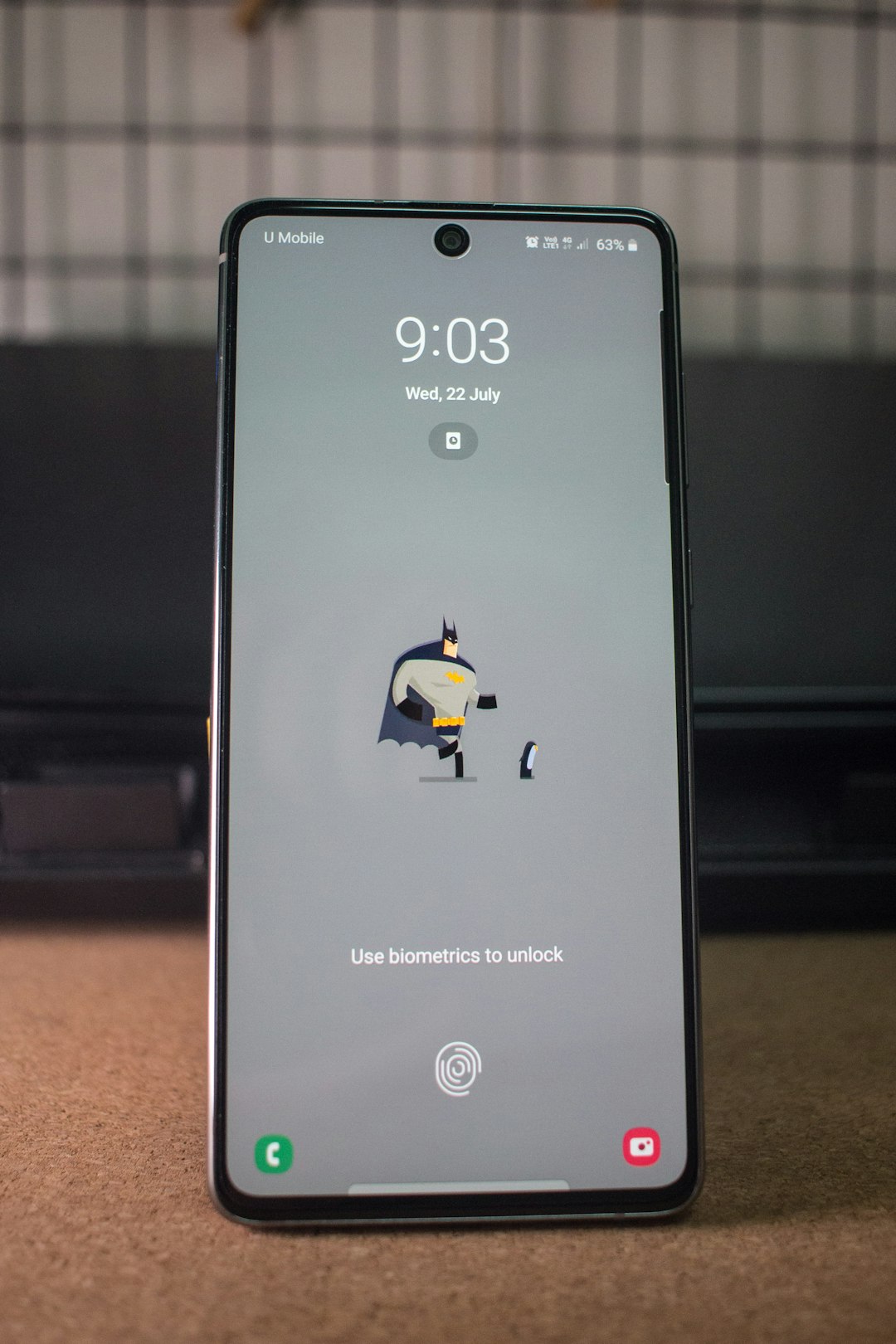Ever bought a phone that felt like it was made from yesterday’s leftovers? You’re not alone. Behind the shiny screens and flashy ads lurk low quality mobile phone manufacturers eager to sell you a “bargain” that quickly turns into a headache. From flimsy builds and outdated software to sketchy warranties and privacy nightmares, these brands can leave you stuck with a device that’s more trouble than it’s worth. But how do you spot them before it’s too late? And what’s the real cost of chasing that “too good to be true” deal?
In this deep dive, we unravel the murky world of low-quality phone makers, revealing 8 major red flags and the hidden dangers they pose. We’ll also guide you through smart buying strategies, highlight reputable brands worth your trust, and share insider tips to protect your pocket and peace of mind. Ready to become a savvy smartphone shopper? Let’s dive in!
Key Takeaways
- Low-quality manufacturers often cut corners on build, software, and support, leading to frustrating and insecure phones.
- Watch out for red flags like misleading specs, no updates, sketchy sales channels, and missing certifications.
- The true cost of a cheap phone includes poor performance, security risks, and lack of warranty.
- Trusted brands like Google Pixel, Apple iPhone, and Samsung Galaxy offer reliable alternatives with regular updates and solid support.
- Always research, read reviews, and verify certifications before buying to avoid costly mistakes.
👉 Shop trusted phones here:
- Google Pixel: Amazon | Google Official Website
- Apple iPhone: Amazon | Apple Official Website
- Samsung Galaxy: Amazon | Samsung Official Website
Table of Contents
- ⚡️ Quick Tips and Facts
- 📱 The Murky Waters: Understanding Low-Quality Mobile Phone Manufacturers
- 🤔 What Defines a “Low-Quality” Mobile Phone Manufacturer?
- ⚠️ The Hidden Dangers: Why Avoiding Shady Phone Makers Matters
- 🚩 Red Flags: How to Spot a Low-Quality Phone Manufacturer
- Poor Build Quality & Materials
- Outdated Software & Lack of Updates
- Misleading Specifications & Benchmarks
- Non-Existent Customer Support & Warranty
- Sketchy Sales Channels & Unverified Sellers
- Unusual Pricing & “Too Good to Be True” Deals
- Privacy & Security Concerns
- Lack of Certifications & Regulatory Compliance
- 📉 Common Pitfalls: Components and Features That Scream “Low Quality”
- 🕵️♀️ The Grey Market & Counterfeits: A Deeper Dive into Risky Purchases
- 💸 Beyond the Specs: The True Cost of a “Bargain” Phone
- ✅ Navigating the Minefield: Reputable Brands vs. Risky Ventures
- 🛡️ Protecting Your Pocket & Peace of Mind: Smart Buying Strategies
- 🚨 What to Do If You’ve Been Burned: Recourse and Resolution
- 🚀 The Future of Phone Manufacturing: Towards Better Standards?
- ✨ Conclusion
- 🔗 Recommended Links
- ❓ FAQ
- 📚 Reference Links
Quick Tips and Facts
If you’re in the market for a new phone, it’s essential to be aware of the worst phone brands to avoid, which you can find more information about at https://www.phonebrands.org/worst-phone-brands/. Here are some quick tips and facts to consider when evaluating low-quality mobile phone manufacturers:
- Research the manufacturer’s reputation and read reviews from multiple sources.
- Check the phone’s specifications and compare them to other models in the same price range.
- Look for certifications like CE, FCC, and ISO 9001, which indicate that the phone meets certain standards for quality and safety.
- Be wary of extremely low prices, as they may indicate a low-quality or counterfeit product.
- Consider the phone’s operating system and whether it will receive regular updates and security patches.
According to Wikipedia, the global smartphone market has become increasingly competitive, with many manufacturers offering high-quality devices at affordable prices. However, some manufacturers prioritize profits over quality, resulting in low-quality phones that can be frustrating to use.
The Murky Waters: Understanding Low-Quality Mobile Phone Manufacturers
Low-quality mobile phone manufacturers can be difficult to identify, as they often use similar marketing tactics and design elements as reputable brands. However, there are some key differences to look out for:
What to Look for in a Low-Quality Phone Manufacturer
- Poor build quality: Low-quality phones may have a flimsy or cheap feel, with loose parts or a fragile design.
- Outdated software: Low-quality phones may run outdated operating systems or lack regular updates, making them vulnerable to security threats.
- Misleading specifications: Low-quality phones may have inflated or misleading specifications, such as a high megapixel count but poor camera performance.
- Lack of customer support: Low-quality phone manufacturers may not offer adequate customer support or warranty services.
What Defines a “Low-Quality” Mobile Phone Manufacturer?
A low-quality mobile phone manufacturer is defined by their prioritization of profits over quality, resulting in phones that are frustrating to use and may not meet basic standards for safety and performance. According to Wired, some key characteristics of low-quality phone manufacturers include:
- Poor design and build quality: Low-quality phones may have a cheap or flimsy design, with loose parts or a fragile build.
- Outdated or insecure software: Low-quality phones may run outdated operating systems or lack regular updates, making them vulnerable to security threats.
- Misleading marketing and specifications: Low-quality phone manufacturers may use misleading marketing tactics or inflate their phone’s specifications to make them appear more impressive than they are.
The Hidden Dangers: Why Avoiding Shady Phone Makers Matters
Avoiding shady phone manufacturers is crucial to ensure that you get a high-quality device that meets your needs and provides a safe and secure user experience. According to Made-in-China, some low-quality phone manufacturers may prioritize profits over safety and security, resulting in phones that can put your personal data and security at risk.
Red Flags: How to Spot a Low-Quality Phone Manufacturer
Here are some red flags to look out for when evaluating a phone manufacturer:
- Poor Build Quality & Materials: Low-quality phones may have a flimsy or cheap feel, with loose parts or a fragile design.
- Outdated Software & Lack of Updates: Low-quality phones may run outdated operating systems or lack regular updates, making them vulnerable to security threats.
- Misleading Specifications & Benchmarks: Low-quality phones may have inflated or misleading specifications, such as a high megapixel count but poor camera performance.
- Non-Existent Customer Support & Warranty: Low-quality phone manufacturers may not offer adequate customer support or warranty services.
- Sketchy Sales Channels & Unverified Sellers: Low-quality phones may be sold through unverified or sketchy sales channels, such as third-party sellers on online marketplaces.
- Unusual Pricing & “Too Good to Be True” Deals: Low-quality phones may be priced unusually low, indicating a potential scam or counterfeit product.
- Privacy & Security Concerns: Low-quality phones may have security vulnerabilities or lack adequate privacy protections, putting your personal data at risk.
- Lack of Certifications & Regulatory Compliance: Low-quality phone manufacturers may not obtain necessary certifications or comply with regulatory requirements, such as CE, FCC, or ISO 9001.
Common Pitfalls: Components and Features That Scream “Low Quality”
Here are some common pitfalls to look out for when evaluating a phone’s components and features:
- Low-quality displays: Low-quality phones may have poor display resolution, brightness, or color accuracy.
- Inadequate storage and RAM: Low-quality phones may have insufficient storage or RAM, resulting in slow performance and limited multitasking capabilities.
- Poor camera performance: Low-quality phones may have low-quality cameras with poor image quality, lack of features, or slow performance.
The Grey Market & Counterfeits: A Deeper Dive into Risky Purchases
The grey market and counterfeit products can be a significant risk when purchasing a phone, especially from unverified sellers or online marketplaces. According to Wikipedia, the grey market and counterfeits can result in phones that are not only low-quality but also potentially dangerous or insecure.
Beyond the Specs: The True Cost of a “Bargain” Phone
While a low-priced phone may seem like a bargain, it’s essential to consider the true cost of ownership, including:
- Limited warranty and support: Low-quality phone manufacturers may not offer adequate warranty or support services.
- Security risks: Low-quality phones may have security vulnerabilities or lack regular updates, putting your personal data at risk.
- Performance and reliability: Low-quality phones may have poor performance, slow charging, or limited battery life.
Navigating the Minefield: Reputable Brands vs. Risky Ventures
When evaluating phone manufacturers, it’s crucial to research reputable brands and avoid risky ventures. According to Wired, some reputable brands to consider include:
- Google Pixel: Known for their high-quality cameras and timely software updates.
- Apple iPhone: Offers a secure and user-friendly operating system with regular updates.
- Samsung Galaxy: Provides a wide range of devices with advanced features and regular updates.
Protecting Your Pocket & Peace of Mind: Smart Buying Strategies
To protect your pocket and peace of mind, consider the following smart buying strategies:
- Research and compare: Research different phone models and compare their specifications, features, and prices.
- Read reviews and check ratings: Read reviews from multiple sources and check the phone’s ratings to get an idea of its performance and reliability.
- Check for certifications and compliance: Ensure that the phone meets necessary certifications and regulatory requirements, such as CE, FCC, or ISO 9001.
What to Do If You’ve Been Burned: Recourse and Resolution
If you’ve purchased a low-quality phone, there are steps you can take to seek recourse and resolution:
- Contact the manufacturer: Reach out to the manufacturer’s customer support and explain the issue.
- File a complaint: File a complaint with the relevant regulatory agency or consumer protection organization.
- Seek a refund or replacement: If the phone is defective or not as described, seek a refund or replacement.
The Future of Phone Manufacturing: Towards Better Standards?
The future of phone manufacturing is likely to involve a shift towards better standards, with a focus on quality, security, and sustainability. According to Wikipedia, some potential trends and developments include:
- Improved materials and design: The use of more sustainable and durable materials, such as recycled plastics or bioplastics.
- Advanced security features: The integration of advanced security features, such as AI-powered threat detection or secure enclaves.
- Increased transparency and accountability: Greater transparency and accountability in the manufacturing process, with a focus on fair labor practices and environmental sustainability.
Conclusion

Navigating the world of mobile phones can feel like walking through a jungle filled with shiny traps and hidden pitfalls. But fear not! By understanding the red flags and characteristics of low-quality mobile phone manufacturers, you can dodge the lemons and find a device that truly serves you well. From poor build quality to outdated software and shady sales channels, the warning signs are there if you know where to look.
While the allure of a bargain phone is strong, remember that the true cost often lies in frustration, security risks, and early obsolescence. Instead, lean on reputable brands like Google Pixel, Apple iPhone, and Samsung Galaxy, which consistently deliver quality, security, and support.
If you’ve ever been burned by a low-quality phone, take heart—there are steps to seek recourse, and your next purchase can be smarter and safer. The future looks promising, with manufacturers moving toward better standards, sustainability, and transparency.
So, next time you’re tempted by that “too good to be true” deal, remember: quality beats cheap every time. Your pocket and peace of mind will thank you! 📱✨
Recommended Links
👉 Shop Reputable Phone Brands on:
- Google Pixel: Amazon | Google Official Website
- Apple iPhone: Amazon | Apple Official Website
- Samsung Galaxy: Amazon | Samsung Official Website
Recommended Reads on Smartphone Quality and Buying Smart:
- “The Smartphone Consumer Guide: How to Choose the Best Phone” on Amazon
- “Mobile Phone Security: Protecting Your Data in a Connected World” on Amazon
FAQ

What are the worst mobile phone brands to avoid?
Many low-quality brands operate in the shadows, often selling phones with poor build quality, outdated software, and little to no customer support. While we avoid naming every brand outright, you can find a detailed list and analysis at Phone Brands™ Worst Phone Brands. Generally, avoid brands with no verifiable reputation, no certifications, and those that sell exclusively through unverified third-party sellers.
How do I identify a low-quality smartphone before buying?
Look for these telltale signs:
- Build materials: Cheap plastics, loose buttons, or flimsy chassis.
- Software updates: Lack of Android or iOS updates beyond the initial release.
- Specifications: Inflated specs that don’t match real-world performance (e.g., a “64MP” camera that produces blurry photos).
- Customer support: No clear warranty or support channels.
- Certifications: Absence of CE, FCC, or other regulatory marks.
Checking multiple reviews and user feedback is your best defense.
Which budget phone brands should I avoid due to poor performance?
Budget doesn’t have to mean bad, but some brands cut corners. Be cautious with brands that:
- Lack a clear update policy.
- Are known for poor battery life or slow processors.
- Have a history of fake benchmarks or misleading specs.
Brands like Motorola and Realme often offer solid budget options, while unknown or generic brands might be risky.
Read more about “What Are the 7 Worst Phone Brands for Battery Life & Performance in 2025? 📱⚡”
What are the common characteristics of a low-end mobile phone manufacturer?
- Minimal or no after-sales support.
- Phones with outdated or insecure operating systems.
- Use of subpar components (screens, batteries, cameras).
- Lack of transparency about manufacturing and certifications.
- Aggressive pricing that seems “too good to be true.”
Can cheap smartphones from unknown brands be reliable?
Sometimes, yes—but it’s a gamble. Some lesser-known manufacturers produce decent phones, especially if they have certifications and positive user reviews. However, many cheap phones from unknown brands suffer from poor build quality, lack of updates, and security vulnerabilities. Always research thoroughly.
How do I research a phone manufacturer’s reputation before making a purchase?
- Read reviews from trusted tech sites like Wired or Phone Brands™.
- Check user feedback on Amazon, Reddit, and tech forums.
- Verify certifications and compliance.
- Look up the company’s history and customer support responsiveness.
What are the risks of buying a smartphone from a little-known or low-quality brand?
- Security vulnerabilities: Lack of timely software updates can expose you to malware.
- Poor performance: Slow processors, laggy UI, and bad cameras.
- No warranty: Difficulty getting repairs or replacements.
- Privacy concerns: Some phones may have pre-installed spyware or backdoors.
- Resale value: Low or no resale value if you decide to upgrade.
Reference Links
- Smartphone – Wikipedia — Comprehensive overview of smartphone history, technology, and market.
- Wired: Best Cheap Phones — Expert recommendations on affordable smartphones.
- Made-in-China: LESIA Mobile Phones — Example of a manufacturer emphasizing quality control.
- Google Pixel Official Site
- Apple iPhone Official Site
- Samsung Galaxy Official Site
- Phone Brands™ Mobile Devices Category
- Phone Brands™ Cellphones Category
- Phone Brands™ Worst Phone Brands
